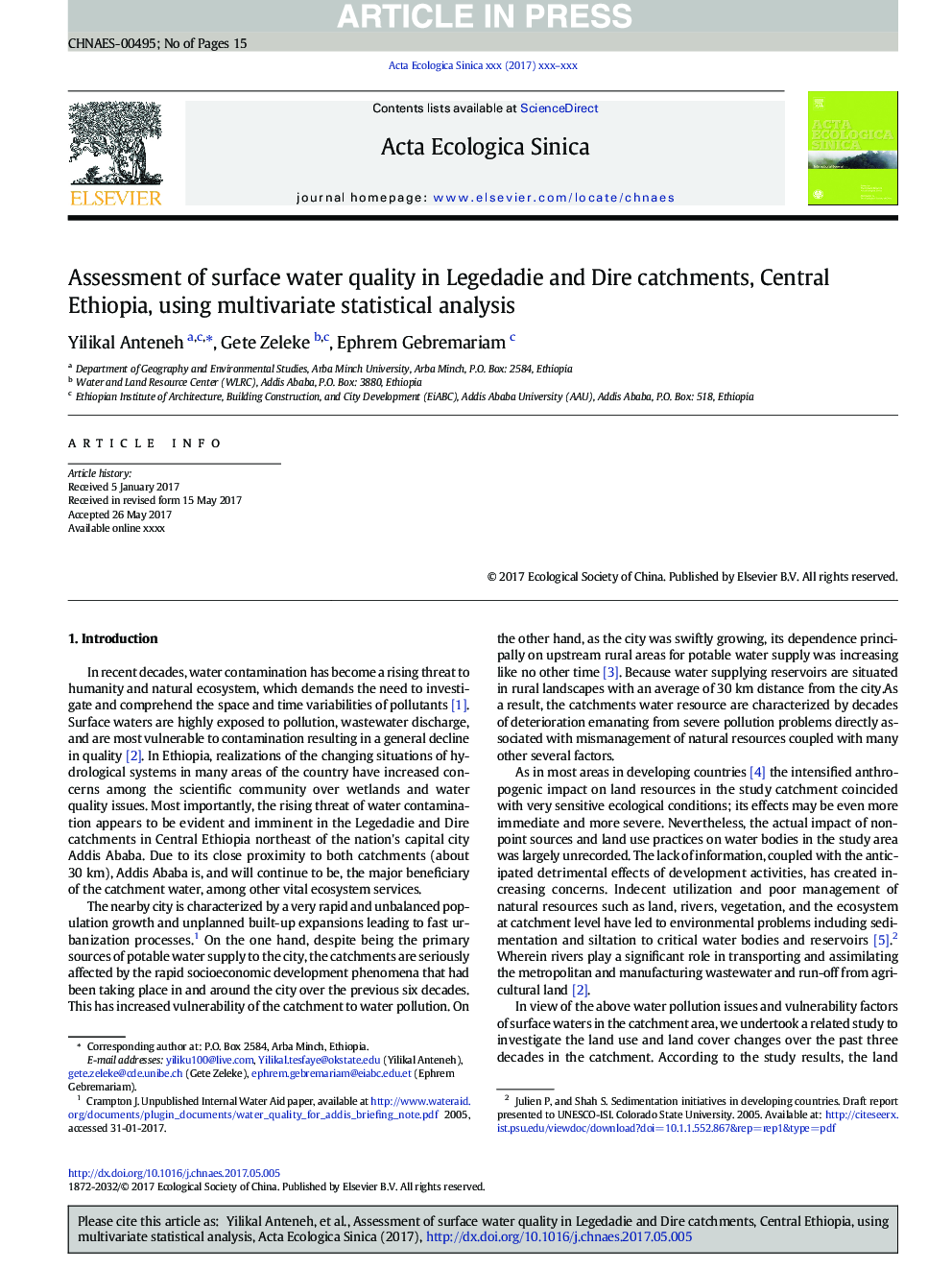| Article ID | Journal | Published Year | Pages | File Type |
|---|---|---|---|---|
| 8846306 | Acta Ecologica Sinica | 2018 | 15 Pages |
Abstract
The quality of surface water in an area could be determined both by anthropogenic actions and natural processes. The current study assessed surface water quality in Legedadie and Dire catchments that cover a total area of 285 km2 in Central Ethiopia northeast of the nation's capital Addis Ababa and within close proximity (20-30 m) from this city.. Accordingly, Addis Ababa is, and will continue to be, the major beneficiary of the the catchments which are in fact the primary sources of potable water supply to the city. Despite its potential ecosystem benefits, the catchment area was seriously affected by the rapid socioeconomic development phenomena that had been taking place in and around the city over the previous six decades. As a result, the catchment water resources are characterized by decades of deterioration because of severe pollution problems directly associated with mismanagement of natural resources coupled with other several factors. Hence, the current study was sought to examine the temporal and spatial determinants of catchment water pollutants. To that end, 14 water quality monitoring stations were selected and set up both in upstream and downstream parts of six rivers and two reservoirs. The water samples collected from different sites were monitored for 30 standard water quality parameters including nutrients, inorganic variable, and trace metals. Seasonal data were then measured for the 30 parameters monitored across two seasons (summer and autumn) over a two-year period (June 2014 - November 2015). The complex two-year seasonal data matrix that comprised of 3,660 observations was treated using multivariate statistical techniques: cluster analysis (CA), factor analysis/principal components (FA/PCA), and discriminant analysis (DA). CA successfully classified both the temporal (summer, autumn, and summer predominant) and spatial (natural, agricultural, urban, and mixed) clusters of water quality monitoring sites. Dimension reduction from FA/PCA was not as substantial as expected since it enabled only30% reduction from the original data matrix. On the other hand, DA procedures demonstrated the best result regarding data reduction and pattern recognition in both temporal and spatial analysis. It extracted data significantly and provided 5 parameters (Temp, pH, DO, salinity, and TN) to afford 96.8% right allocations during temporal analysis and only 7 parameters (pH, Turbidity, TN, Total hardness, Pb, Fe, and Cu) to yield 85.2% right allocations during the spatial analysis.Thus, these water quality parameters were most significant for seasonal and spatial water quality variation in the catchment. Therefore, DA enabled a significant reduction of the dimension of the original data matrix into a few significant parameters that affect water quality. In conclusion, the study demonstrated that multivariate statistical techniques are very useful for analysis and interpretation of complex water quality data sets for efficient assessment of water quality and identification of pollution sources as well as an effective understanding of the space and time effects of water quality.
Related Topics
Life Sciences
Agricultural and Biological Sciences
Ecology, Evolution, Behavior and Systematics
Authors
Yilikal Anteneh Yilikal Anteneh, Gete Zeleke Gete Zeleke, Ephrem Gebremariam Ephrem Gebremariam,
